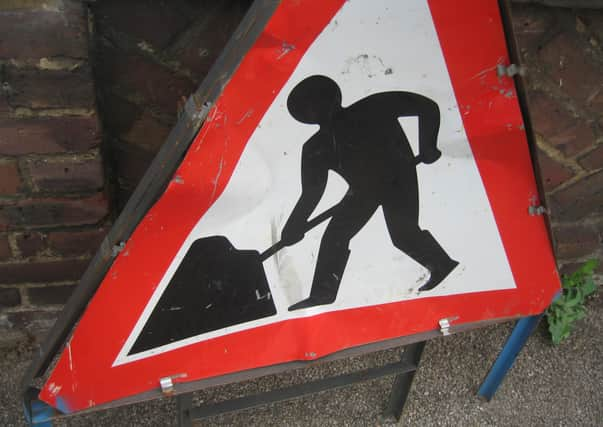Surface dressing scheme starts on roads around Sleaford


Surface dressing is an efficient way of prolonging the life of Lincolnshire’s roads.
Crews spray the existing road surface with a coating of bitumen, and then spread stone chippings on top. The chippings are then rolled into the bitumen, creating a new surface.
Advertisement
Hide AdAdvertisement
Hide AdAfter 24 hours, the bitumen has set, and they will sweep the road to remove loose chippings and reopen it to traffic. Traffic driving over the new service at a reduced speed helps to further set the chippings.
They will then sweep the road twice more – once after a week, and again after 13 weeks – to remove any further loose chippings. Road markings and studs will be replaced within 28 days.
Redressing roads can help extend the life of the road by between 10 and 15 years.
On July 1 the teams will be surfacing the London Road layby on the A15 at Osbournby and Southfields in Sleaford.
Advertisement
Hide AdAdvertisement
Hide AdOn July 2 they will do Broughton Road in Carlton Le Moorland, Gorse Drove/Clay lane in Scredington, Parsons Drove in Swaton and all the roads in the Southfields estate in Sleaford, namely: Oak Road/Hawthorn Drive, Chestnut Close, Pine Close, Juniper Way, Alder Road, Aspen Drive, Lavender Close, Cypress Close, Mulberry Close, Acacia Close Sleaford.
On July 3 they will surface, Redwood Avenue, Magnolia Road, Limetree Close, Rowan Close, Pear Tree Close, Larch Way and Holly Close in Sleaford.
Coun Richard Davies, executive member for highways at Lincolnshire County Council, said: “Surface dressing is a key part of the routine maintenance of our roads. It extends their life without the lengthy disruption caused by completely digging the road up and resurfacing.
“Redressed roads are more skid-resistant and have a waterproof seal, which helps prevent potholes forming. Crucially, surface dressing helps us keep roads in good condition for longer so that we can focus our resources on fully resurfacing the roads that need it most.”
Advertisement
Hide AdAdvertisement
Hide AdSigns will also be put up on roads to advise residents and drivers of upcoming works. If redressing is taking place on your street, do not park on the road when work is taking place.
Work is weather dependent, and so the schedule is subject to change.
The contractor’s crews working on the redressing scheme are living together in temporary accommodation whilst work takes place. due to Covid 19.
As well as allowing them to be closer to the roads they are working on, the added benefit of living together means that the impact of and need for social distancing between the workers is reduced.